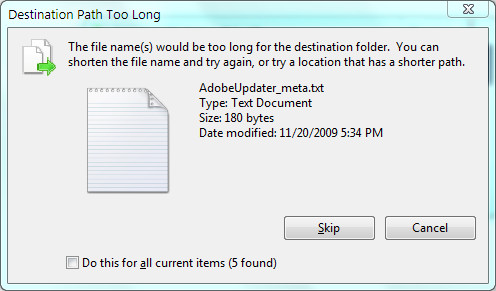

Long path tool 5.2.1 validation key simulator#
By contrast, the Cisco ACI Simulator appliance includes three actual Cisco APIC instances and two simulated leaf switches and two simulated spine switches in a single server. One instance of the production Cisco APIC will be shipped per server appliance. In addition, the Cisco ACI Simulator appliance allows simulation of faults and alerts to facilitate testing and demonstrate features. However, some of the simulated switch ports have been mapped to the front-panel server ports, which allows you to connect external management entities such as ESX servers, vCenters, vShields, bare metal servers, Layer 4 to Layer 7 services, AAA systems, and other physical or virtual service appliances. The Cisco ACI Simulator appliance includes simulated switches, so you cannot validate a data path. The native GUI and CLI of the Cisco APIC use the same APIs that are published to third parties.

You can use the Cisco ACI Simulator appliance to understand features, exercise APIs, and initiate integration with third-party orchestration systems and applications. The intent of the Cisco ACI Simulator appliance is to provide real, fully-featured Cisco APIC software, along with a simulated fabric infrastructure of leaf switches and spine switches in one physical server. In the Installation Notes section, added the following text: Exceptions may be present in the documentation due to language that is hardcoded in the user interfaces of the product software, language used based on RFP documentation, or language that is used by a referenced third-party product. For the purposes of this documentation set, bias-free is defined as language that does not imply discrimination based on age, disability, gender, racial identity, ethnic identity, sexual orientation, socioeconomic status, and intersectionality. Note: The documentation set for this product strives to use bias-free language. For information about the functionality, see the Cisco Application Policy Infrastructure Controller Release Notes, Release 5.2(1).įor more information about this product, see "Related Content." The Cisco ACI Simulator appliance 5.2(1) release contains the same functionality as the Cisco Application Policy Infrastructure Controller (APIC) 5.2(1) release.
Long path tool 5.2.1 validation key download#
For recent and future releases, you can download the Cisco ACI Simulator VM, an OVA file that can be installed in a virtual machine (VM) on any server that meets the installation requirements. Note: The Cisco ACI Simulator appliance server is no longer for sale after June 20, 2019, as noted here. Use this document in combination with the documents listed in the Related Documentation section. This document provides the compatibility information, usage guidelines, and the scale values that were validated in testing this Cisco ACI Simulator appliance release. The Cisco APIC is a distributed system implemented as a cluster of many controller instances. It is the central control engine for the broader cloud network, simplifying management while allowing tremendous flexibility in how application networks are defined and automated and also providing northbound REST APIs.

The Cisco APIC programmatically automates network provisioning and control based on the application requirements and policies. The Cisco APIC supports the deployment, management and monitoring of any application anywhere, with a unified operations model for physical and virtual components of the infrastructure. The Cisco Application Policy Infrastructure Controller (APIC) is the key architectural component that is the unified point of automation, management, monitoring, and programmability for the Cisco ACI. The Cisco Application Centric Infrastructure (ACI) is conceptualized as a distributed, scalable, multi-tenant infrastructure with external endpoint connectivity that is controlled and grouped through application centric policies.


 0 kommentar(er)
0 kommentar(er)
